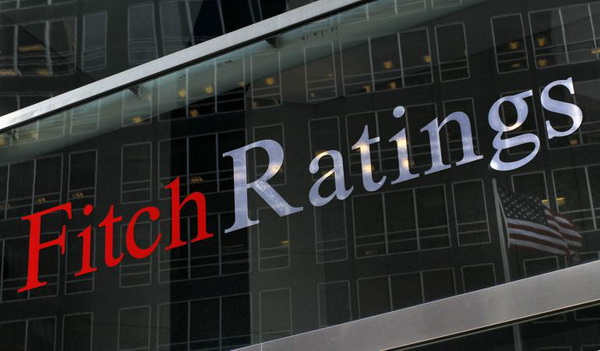Link to Fitch Ratings’ Report(s): City of Yerevan – Rating Action Report
Fitch Ratings-Moscow-17 April 2020:
Fitch Ratings has revised Yerevan City’s Outlook to Negative from Stable, while affirming the city’s
Long-Term Foreign- and Local-Currency Issuer Default Ratings (IDRs) at ‘BB-‘. A full list of rating
actions is below.
Read also
The revision of Outlook follows a recent similar action on the sovereign ratings of Armenia (see ‘
Fitch Revises Outlook on Armenia to Negative; Affirms at ‘BB-‘ dated 3 April 2020 on
www.fitchratings.com), due to expected negative impact of the coronavirus pandemic on the
national economy. We view the city’s ratings as being capped by the sovereign’s.
CRA3 DEVIATION
Under EU credit rating agency (CRA) regulation, the publication of local and regional governments’
(LRGs) reviews is subject to restrictions and must take place according to a published schedule,
except where it is necessary for CRAs to deviate from this in order to comply with their legal
obligations. Fitch interprets this provision as allowing us to publish a rating review in situations
where there is a material change in the creditworthiness of the issuer that we believe makes it
inappropriate for us to wait until the next scheduled review date to update the rating or Outlook/
Watch status. The next scheduled review date for Fitch’s rating on Yerevan City is 22 May 2020, but
Fitch believes that recent developments in the country warrant such a deviation from the calendar
and our rationale for this is laid out below.
While Yerevan City’s most recently available data may not have indicated performance
impairment, material changes in revenue and cost profiles are occurring across the sector and
likely to worsen in the coming months as economic activity suffers and government restrictions
are maintained or broadened. Fitch’s ratings are forward-looking in nature, and we will monitor
developments in the sector for their severity and duration, and incorporate revised base- and
rating-case qualitative and quantitative inputs based on performance expectations and
assessment of key risks.
Key Rating Drivers
The rating action reflects the following key rating drivers and their relative weights:
HIGH
Sovereign Cap
Yerevan’s IDRs are capped by those of Armenia (BB-/Negative) as our assessment of the city’s
standalone credit profile (SCP) remains unchanged at ‘bbb-‘ since the last review on 2 December
2019.
LOW
Risk Profile: Weaker
Fitch has assessed Yerevan City’ risk profile as ‘Weaker’ reflecting a ‘Weaker’ assessment for four
key factors – revenue robustness and adjustability; expenditure adjustability; and liabilities and
liquidity flexibility. The other attributes, expenditure sustainability and liabilities and liquidity
robustness, are assessed as ‘Midrange’.
Debt Sustainability Assessment: ‘aaa’
According to our rating case, Yerevan’s debt payback ratio (net direct risk-to-operating balance) –
the primary metric of debt sustainability assessment – will remain strong over the next five years
due to sufficient cash and expected low debt. The secondary metrics, fiscal debt burden measured
as net adjusted debt-to-operating revenue, and actual debt-servicing coverage ratio, are assessed
at ‘aaa’. This leads to the city’s overall debt sustainability assessment at ‘aaa’.
Derivation Summary
Under the new Rating Criteria for International Local and Regional Governments (LRGs), Fitch
classifies Yerevan City as a Type B LRG, which is required to cover debt service from cash flow on
an annual basis. The assessment of four ‘Weaker’ key factors and two ‘Midrange’ key factors
resulted in overall assessment of the city’s risk profile as ‘Weaker’ under the risk profile guidance
in our criteria.
Yerevan’s SCP of ‘bbb-‘ reflects a combination of a ‘Weaker’ risk profile and a ‘aaa’ debt
sustainability. The SCP also factors in international peer comparison. Fitch does not apply any
asymmetric risk or extraordinary support from the national government, while the city’s IDR
remains capped by that of the sovereign.
Key Assumptions
Qualitative assumptions and assessments and their respective change since the last review on 2
December 2019 and weight in the rating decision:
Risk Profile: Weaker, unchanged with Low weight
Revenue Robustness: Weaker, unchanged with Low weight
Revenue Adjustability: Weaker, unchanged with Low weight
Expenditure Sustainability: Midrange, unchanged with Low weight
Expenditure Adjustability: Weaker, unchanged with Low weight
Liabilities and Liquidity Robustness: Midrange, unchanged with Low weight
Liabilities and Liquidity Flexibility: Weaker, unchanged with Low weight
Debt sustainability: ‘aaa’ category unchanged with Low weight
Extraordinary Support: n/a
Asymmetric Risk: n/a
Sovereign cap: Yes, weakening with High weight
Quantitative Assumptions – Issuer-Specific
Fitch’s rating case is a “through-the-cycle” scenario, which incorporates a combination of revenue,
cost and financial risk stresses. It is based on 2015-2019 figures and 2020-2024 projected ratios.
The key assumptions for the scenario include:
– 5.7% yoy increase in operating revenue on average in 2019-2023, including a 4.2% increase in
taxes, 6.3% increase in non-tax revenue and 6.7% increase in current transfers; and
– 15.4% yoy increase in operating spending on average in 2019-2023.
Figures as per Fitch’s sovereign forecast for 2020 and 2021, respectively:
– Real GDP growth (%): -0.5, 5.5
– Consumer prices (annual average % change): 0.5, 3.5
– General government balance (% of GDP): -5.5, -3.5
– General government debt (% of GDP): 59.2, 56
– Current account balance plus net FDI (% of GDP): -7.1, -5.8
– Net external debt (% of GDP): 53, 52.9
– IMF Development Classification: EM
– CDS Market Implied Rating: n/a
RATING SENSITIVITIES
Factors that may, individually or collectively, lead to negative rating action/downgrade:
– A downgrade of Armenia’s IDRs; and
– A multiple-notch revision of the city’s SCP below ‘bb-‘, which could be driven by material
deterioration of Yerevan’s debt metrics, particularly a debt payback sustainably above 5x
accompanied by fiscal debt burden overshooting 50% under Fitch’s rating case.
Factors that may, individually or collectively, lead to positive rating action/upgrade:
– An upgrade/outlook revision to Stable of Armenia’s IDRs.
Best/Worst Case Rating Scenario
International scale credit ratings of Public Finance issuers have a best-case rating upgrade scenario
(defined as the 99th percentile of rating transitions, measured in a positive direction) of three
notches over a three-year rating horizon; and a worst-case rating downgrade scenario (defined as
the 99th percentile of rating transitions, measured in a negative direction) of three notches over
three years. The complete span of best- and worst-case scenario credit ratings for all rating
categories ranges from ‘AAA’ to ‘D’. Best- and worst-case scenario credit ratings are based on
historical performance. For more information about the methodology used to determine
sector-specific best- and worst-case scenario credit ratings, visit https://www.fitchratings.com/site/
re/10111579.
REFERENCES FOR SUBSTANTIALLY MATERIAL SOURCE CITED AS KEY DRIVER OF RATING
The principal sources of information used in the analysis are described in the Applicable Criteria.
ESG Considerations
ESG issues are credit neutral or have only a minimal credit impact on the entity(ies), either due to
their nature or the way in which they are being managed by the entity(ies). For more information
on Fitch’s ESG Relevance Scores, visit www.fitchratings.com/esg.
Yerevan City; Long Term Issuer Default Rating; Affirmed; BB-; RO:Neg
—-; Short Term Issuer Default Rating; Affirmed; B
—-; Local Currency Long Term Issuer Default Rating; Affirmed; BB-; RO:Neg
FITCH RATINGS PRESS RELEASE






















































